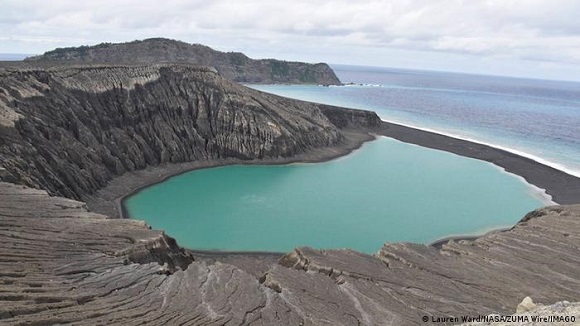The island is the first of its kind born in the satellite era.
Photo: DW
When an underwater volcano in the South Pacific erupted in 2015, the force of the natural phenomenon created the new island of Hunga Tonga Hunga Ha'apai (Hunga Tonga).
But not only that: its emergence also created an unprecedented opportunity not only for geologists and volcanologists, but also for biologists and ecologists.
However, the island was destined for a short life of just seven years, after being destroyed by another eruption in early 2022;
the largest explosive eruption of the 21st century.
Still, a research team led by CU Boulder and CIRES
seized the rare opportunity to study the first microbial colonizers of the newly formed landmass and learn how ecosystems begin before plants or animals appear.
To their surprise, the researchers discovered a unique microbial community that metabolizes sulfur and atmospheric gases, similar to organisms found in deep-sea vents or hot springs, according to a statement from the University of Colorado.
“We didn't see what we expected,” says University of Colorado microbial ecologist Nick Dragone and lead author of the study published in mBio.
"We thought we would see organisms found when a glacier recedes, or cyanobacteria, more typical early colonizing species, but instead we found a unique group of bacteria that metabolize sulfur and atmospheric gases," he added.
“Incredibly unique opportunity”
Combined satellite images show Tonga's Hunga Ha apai island on April 11, 2021 L and January 17, 2022. Photo: DW
The unique ability to study an entirely new island provided Dragone and his colleagues with a "natural laboratory like no other," so they took soil samples that were later analyzed using DNA sequencing.
“These types of volcanic eruptions occur all over the world, but they don't usually produce islands.
We had an incredibly unique opportunity,” Dragone said.
"No one had previously comprehensively studied the microorganisms of this type of island system at such an early stage," he added.
Although plants colonized the island fairly quickly after its formation, probably thanks to the seeds present in bird droppings, the researchers focused their collecting efforts on bare surfaces, where they found bacteria and archaea in all of their samples from the cone of the island. volcano.
And the researchers suspect that these microbes – which do not come from ocean water or bird droppings – could come from underground.
The island is the first of its kind born in the satellite era.
Photo: DW
(Taken from DW)
